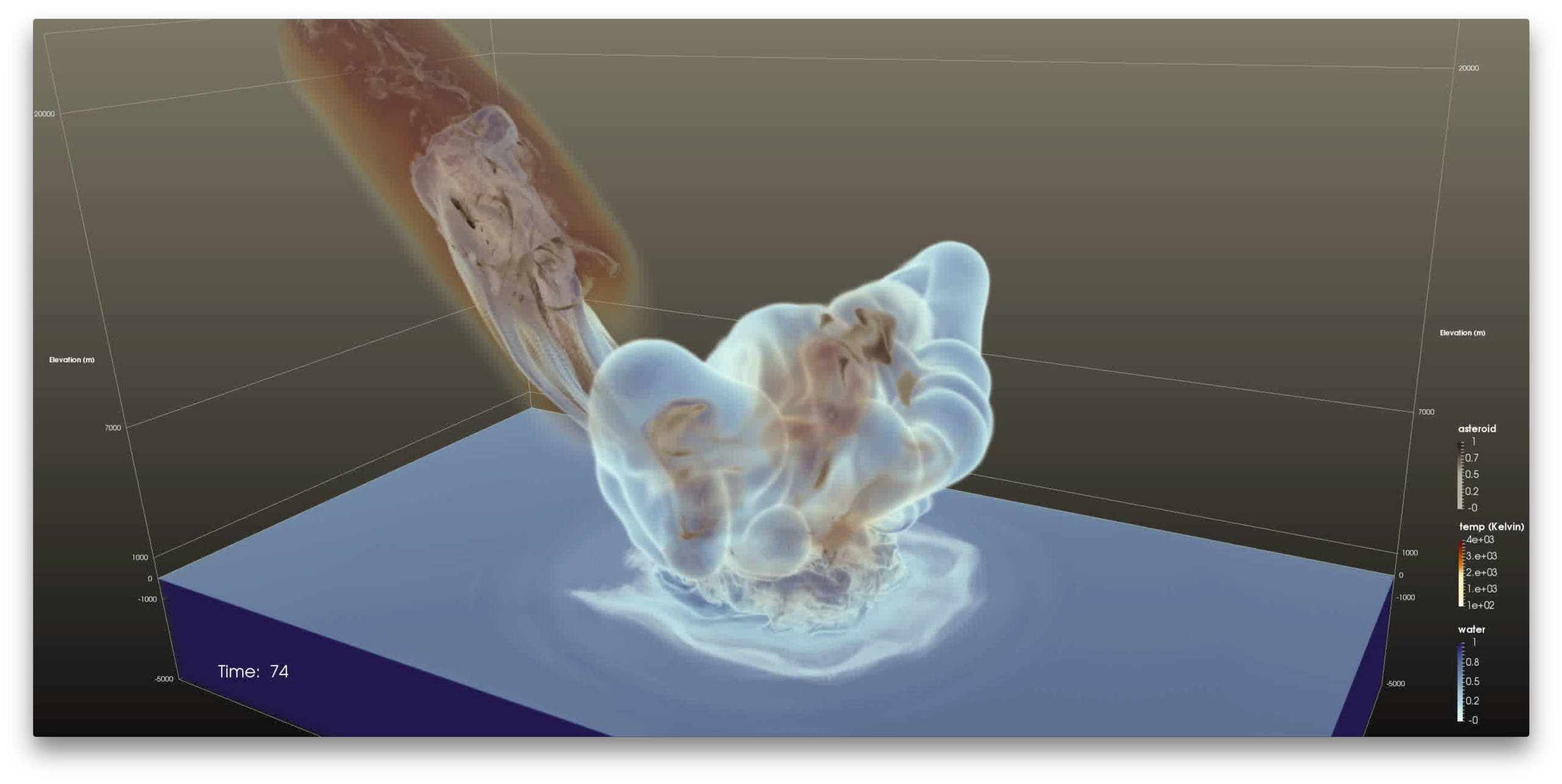
Deep Water Impact Data Set (Click here to go to download)
This ensemble data set represents the study of asteroid impacts in deep ocean water. NASA’s Planetary Defense Coordination Office [1] is keenly interested to know the lower size limit of dangerous asteroids, so as to focus resources on finding all larger objects that potentially threaten the earth. Since most of the planet’s surface is water, that is where asteroids will most likely impact. This observation has generated a serious debate over the last two decades on just how dangerous impact-induced waves or tsunamis are to populated shorelines. … More in the full “Deep Water Impact Data Set” description paper.
Associated SuperComputing16 paper and video.
This ensemble data set and the associated description paper linked to above have been assigned LA-UR-17-21595.
When using this data please cite Los Alamos National Laboratory tech report LA-UR-17-21595.
@techreport{Patchett2017,
title = {Deep Water Impact Ensemble Data Set},
author = {John Patchett and Galen Gisler},
url = {https://datascience.dsscale.org/wp-content/uploads/2017/03/DeepWaterImpactEnsembleDataSet.pdf},
year = {2017},
date = {2017-02-14},
abstract = {This ensemble data set represents the study of asteroid impacts in deep ocean water. NASA’s Planetary Defense Coordination Ocean [1] is keenly interested to know the lower size limit of dan- gerous asteroids, so as to focus resources on finding all larger objects that potentially threaten the earth. Since most of the planet’s surface is water, that is where asteroids will most likely impact. This observation has generated a serious debate over the last two decades on just how dangerous impact-induced waves or tsunamis are to populated shorelines.},
note = {LA-UR-17-21595},
keywords = {asteroid, ensemble data set, In situ analysis, ParaView},
pubstate = {published},
tppubtype = {techreport}
}